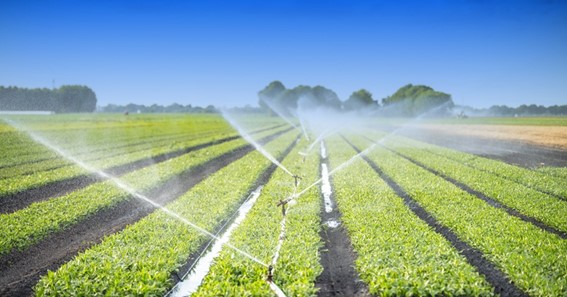If your utility bill keeps rising, you might need to keep track of the amount of water your irrigation system uses. Likewise, in light of water scarcity (which affects many areas), it might be prudent to look into ways to conserve the water we use for irrigation.
Working with an expert firm would be a good starting point for exploring a Marietta irrigation service such as installation or system repairs in your area. Let’s dive deep to look at some of the approaches you can use to lower your water consumption.
- Fine-tune your Irrigation System
Efficient water application reduces wastage. For instance, proper placement of sprinklers can ensure the planted area is uniformly irrigated. Rather than running your sprinkler longer to cover dry spots, work on ensuring accurate head spacing or alignment to improve distribution and promote efficiency.
Also, periodic checks can let you find leaks or bottlenecks in the system that could be wasting water. In turn, timely repair of such leaks would ensure an efficient system and hopefully, reduce water usage.
In like manner, proper maintenance of your irrigation system can reduce water usage by ensuring optimal performance. Let’s consider sprinklers for a moment. The high pressure causes water droplets to atomize- fragment into a fine spray that’s easily carried off by the wind. By maintaining a lower pressure, the sprinkler system releases larger drops of water that achieve the intended purpose, thus minimizing wastage.
- Consider Mulching
Consider adding a protective layer over the soil by mulching it. Soil loses more moisture during the dry season, implying you need to water your plants more frequently. So, what’s the point?
Mulch helps regulate soil temperatures throughout the day, minimizing over-reliance on irrigation. Still, fewer weeds are likely to grow if you mulch your plants and trees and, in so doing, reduce the need for more water to keep your plants healthy.
The soil eventually retains more water if your crops are mulched. In turn, reduced evaporation puts less pressure on your valuable resource- water. Plus, mulch adds organic material as the straw or other material used decays, enhancing the soil’s capacity to hold water.
- Switch to Drip Irrigation
A drip system is undoubtedly more efficient than an overhead irrigation system. Here are some of the upsides of drip irrigation:
- Water soaks into the soil to promote plant growth.
- Evaporation is kept to a minimum, and the likelihood of runoff reduces.
- It provides a targeted or localized approach that saves water by watering only the plant’s root zone where it’s most needed.
- It applies water slowly yet frequently and deeply for healthier root systems.
- You can manage the soil’s moisture level through other approaches to ensure optimal irrigation and prevent over-irrigation.
If you’re using a conventional sprinkler system, consider converting to drip irrigation, especially within your plant beds. Doing so would reduce your water use by a significant proportion.
- Go for Smart Technology
Consider integrating smart water controllers into your irrigation system to optimize water use. Controllers automatically keep up with your plants watering needs by considering the weather and soil’s moisture level.
Using smart controllers can pre-determine how long you intend to water your crops without much fuss. Depending on prevailing weather conditions, you can also vary the watering frequency. Generally, the data you key into a controller (regarding soil and plant type) factors into its run time.
But don’t just set up the system and be on your way: frequent monitoring and adjusting are key to achieving tenable results. Also, bear in mind that your plants’ watering needs are likely to vary at different stages of their development.
- Be Wary of Runoff
If you have a small setup for a garden, water runoff might not seem like a major concern, but it can be. Runoff leads to water wastage and can pollute waterways by channeling lawn chemicals, soil, or pesticides into streams. If your sprinkler system applies too much water, some of it could flow to unintended areas. How can you reduce or prevent runoff? For starters, you can do the following:
- Keep your sprinkler heads aligned to irrigate the intended portions- planted crops or landscape.
- Harvesting rainwater or creating a rain garden to minimize runoff on slopy areas
- Minimize the use of concrete paving to facilitate water infiltration
- Redirect water from downspouts to the landscape as opposed to hard surfaces
- Opt for Drought-Resistant Crops
Native crops have a higher chance of thriving when drought threatens to wreak havoc in a given area. Ideally, select crops or plants that are ideal for the climate in your region. Drought-resistant crops are acclimated to seasonal changes and can survive extended periods without sufficient water.
Likewise, some crops have a low water need, making them more suitable for areas that experience drought. Selecting such crop species can result in better yields per drop, even if they’re not watered regularly due to water scarcity.
A sustainable approach to conserving water is one of the best ways to ensure our crops thrive while addressing the related challenges we face. Management practices that optimize irrigation or utilize alternative watering systems can lower consumption and save this finite resource for the good of all.







